Anastasios Papazafeiropoulos
Near-Field Beamforming for Stacked Intelligent Metasurfaces-assisted MIMO Networks
Aug 03, 2024


Abstract:Stacked intelligent metasurfaces (SIMs) have recently gained significant interest since they enable precoding in the wave domain that comes with increased processing capability and reduced energy consumption. The study of SIMs and high frequency propagation make the study of the performance in the near field of crucial importance. Hence, in this work, we focus on SIM-assisted multiuser multiple-input multiple-output (MIMO) systems operating in the near field region. To this end, we formulate the weighted sum rate maximisation problem in terms of the transmit power and the phase shifts of the SIM. By applying a block coordinate descent (BCD)-relied algorithm, numerical results show the enhanced performance of the SIM in the near field with respect to the far field.
OFDM-Based Active STAR-RIS-Aided Integrated Sensing and Communication Systems
Jun 04, 2024Abstract:Simultaneously transmitting and reflecting reconfigurable intelligent surface (STAR-RIS), which consists of numerous passive elements, has recently emerged in wireless communication systems as a promising technology providing 360$^\circ$ coverage and better performance. In our research, we introduce an active STAR-RIS (ASTARS)-aided integrated sensing and communications (ISAC) system designed to optimize the radar signal-to-noise ratio (SNR), enhancing detection and signal transmission efficiency. The introduction of an ISAC system aims to improve both communication efficiency and sensing capabilities. Also, we employ orthogonal frequency division multiplexing (OFDM) to address the frequency-selective fading problem. Furthermore, we evaluate the radar sensing capabilities by examining the range and velocity, and assess the performance through the mean-squared error (MSE) of their estimations. Our simulation results demonstrate that ASTARS outperforms STAR-RIS in our system configurations, and that the proposed optimization approach further enhances the system performance. Additionally, we confirm that an increase in the subcarrier spacing can reduce the transmission bit error rate (BER) under high-velocity conditions.
Achievable Rate Optimization for Large Stacked Intelligent Metasurfaces Based on Statistical CSI
May 29, 2024



Abstract:Stacked intelligent metasurface (SIM) is an emerging design that consists of multiple layers of metasurfaces. A SIM enables holographic multiple-input multiple-output (HMIMO) precoding in the wave domain, which results in the reduction of energy consumption and hardware cost. On the ground of multiuser beamforming, this letter focuses on the downlink achievable rate and its maximization. Contrary to previous works on multiuser SIM, we consider statistical channel state information (CSI) as opposed to instantaneous CSI to overcome challenges such as large overhead. Also, we examine the performance of large surfaces. We apply an alternating optimization (AO) algorithm regarding the phases of the SIM and the allocated transmit power. Simulations illustrate the performance of the considered large SIM-assisted design as well as the comparison between different CSI considerations.
STAR-RIS-Assisted Communication Radar Coexistence: Analysis and Optimization
Apr 25, 2024



Abstract:Integrated sensing and communication (ISAC) is expected to play a prominent role among emerging technologies in future wireless communications. In particular, a communication radar coexistence system is degraded significantly by mutual interference. In this work, given the advantages of promising reconfigurable intelligent surface (RIS), we propose a simultaneously transmitting and reflecting RIS (STAR-RIS)-assisted radar coexistence system where a STAR-RIS is introduced to improve the communication performance while suppressing the mutual interference and providing full space coverage. Based on the realistic conditions of correlated fading, and the presence of multiple user equipments (UEs) at both sides of the RIS, we derive the achievable rates at the radar and the communication receiver side in closed forms in terms of statistical channel state information (CSI). Next, we perform alternating optimization (AO) for optimizing the STAR-RIS and the radar beamforming. Regarding the former, we optimize the amplitudes and phase shifts of the STAR-RIS through a projected gradient ascent algorithm (PGAM) simultaneously with respect to the amplitudes and phase shifts of the surface for both energy splitting (ES) and mode switching (MS) operation protocols. The proposed optimization saves enough overhead since it can be performed every several coherence intervals. This property is particularly beneficial compared to reflecting-only RIS because a STAR-RIS includes the double number of variables, which require increased overhead. Finally, simulation results illustrate how the proposed architecture outperforms the conventional RIS counterpart, and show how the various parameters affect the performance. Moreover, a benchmark full instantaneous CSI (I-CSI) based design is provided and shown to result in higher sum-rate but also in large overhead associated with complexity.
Performance of Double-Stacked Intelligent Metasurface-Assisted Multiuser Massive MIMO Communications in the Wave Domain
Feb 26, 2024



Abstract:Although reconfigurable intelligent surface (RIS) is a promising technology for shaping the propagation environment, it consists of a single-layer structure within inherent limitations regarding the number of beam steering patterns. Based on the recently revolutionary technology, denoted as stacked intelligent metasurface (SIM), we propose its implementation not only on the base station (BS) side in a massive multiple-input multiple-output (mMIMO) setup but also in the intermediate space between the base station and the users to adjust the environment further as needed. For the sake of convenience, we call the former BS SIM (BSIM), and the latter channel SIM (CSIM). Hence, we achieve wave-based combining at the BS and wave-based configuration at the intermediate space. Specifically, we propose a channel estimation method with reduced overhead, being crucial for SIMassisted communications. Next, we derive the uplink sum spectral efficiency (SE) in closed form in terms of statistical channel state information (CSI). Notably, we optimize the phase shifts of both BSIM and CSIM simultaneously by using the projected gradient ascent method (PGAM). Compared to previous works on SIMs, we study the uplink transmission, a mMIMO setup, channel estimation in a single phase, a second SIM at the intermediate space, and simultaneous optimization of the two SIMs. Simulation results show the impact of various parameters on the sum SE, and demonstrate the superiority of our optimization approach compared to the alternating optimization (AO) method.
Two-Timescale Design for Active STAR-RIS Aided Massive MIMO Systems
Feb 15, 2024Abstract:Simultaneously transmitting and reflecting \textcolor{black}{reconfigurable intelligent surface} (STAR-RIS) is a promising implementation of RIS-assisted systems that enables full-space coverage. However, STAR-RIS as well as conventional RIS suffer from the double-fading effect. Thus, in this paper, we propose the marriage of active RIS and STAR-RIS, denoted as ASTARS for massive multiple-input multiple-output (mMIMO) systems, and we focus on the energy splitting (ES) and mode switching (MS) protocols. Compared to prior literature, we consider the impact of correlated fading, and we rely our analysis on the two timescale protocol, being dependent on statistical channel state information (CSI). On this ground, we propose a channel estimation method for ASTARS with reduced overhead that accounts for its architecture. Next, we derive a \textcolor{black}{closed-form expression} for the achievable sum-rate for both types of users in the transmission and reflection regions in a unified approach with significant practical advantages such as reduced complexity and overhead, which result in a lower number of required iterations for convergence compared to an alternating optimization (AO) approach. Notably, we maximize simultaneously the amplitudes, the phase shifts, and the active amplifying coefficients of the ASTARS by applying the projected gradient ascent method (PGAM). Remarkably, the proposed optimization can be executed at every several coherence intervals that reduces the processing burden considerably. Simulations corroborate the analytical results, provide insight into the effects of fundamental variables on the sum achievable SE, and present the superiority of 16 ASTARS compared to passive STAR-RIS for a practical number of surface elements.
A Low-Complexity Solution to Sum Rate Maximization for IRS-assisted SWIPT-MIMO Broadcasting
Feb 28, 2023Abstract:This paper focuses on the fundamental problem of maximizing the achievable weighted sum rate (WSR) at information receivers (IRs) in an intelligent reflecting surface (IRS) assisted simultaneous wireless information and power transfer system under a multiple-input multiple-output (SWIPT-MIMO) setting, subject to a quality-of-service (QoS) constraint at the energy receivers (ERs). Notably, due to the coupling between the transmit precoding matrix and the passive beamforming vector in the QoS constraint, the formulated non-convex optimization problem is challenging to solve. We first decouple the design variables in the constraints following a penalty dual decomposition method, and then apply an alternating gradient projection algorithm to achieve a stationary solution to the reformulated optimization problem. The proposed algorithm nearly doubles the WSR compared to that achieved by a block-coordinate descent (BCD) based benchmark scheme. At the same time, the complexity of the proposed scheme grows linearly with the number of IRS elements while that of the benchmark scheme is proportional to the cube of the number of IRS elements.
Cooperative Hybrid Networks with Active Relays and RISs for B5G: Applications, Challenges, and Research Directions
Jun 23, 2022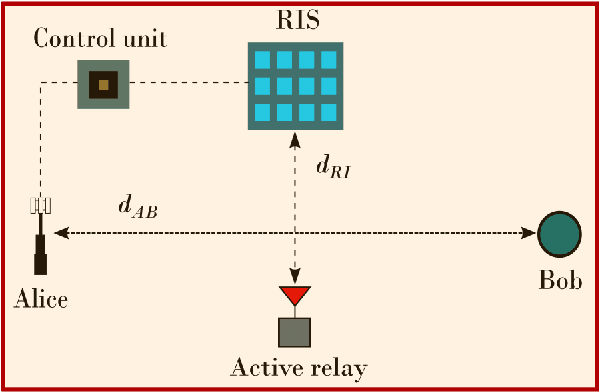
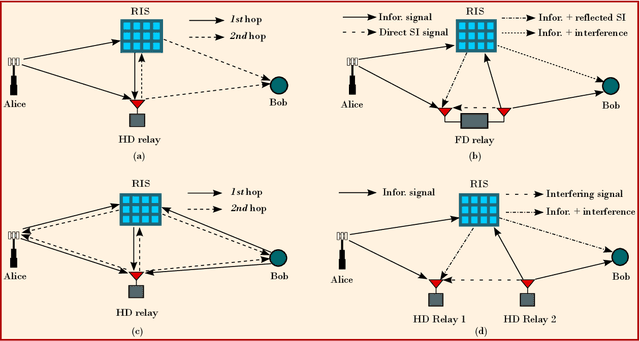
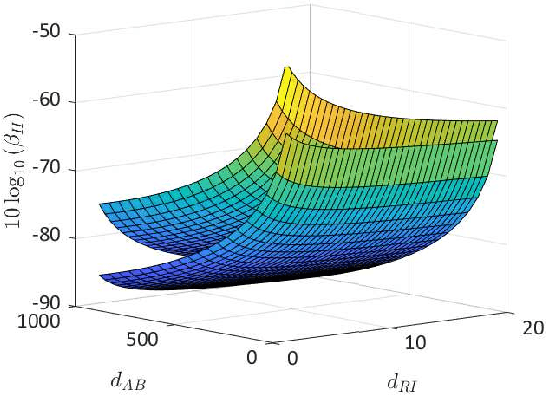
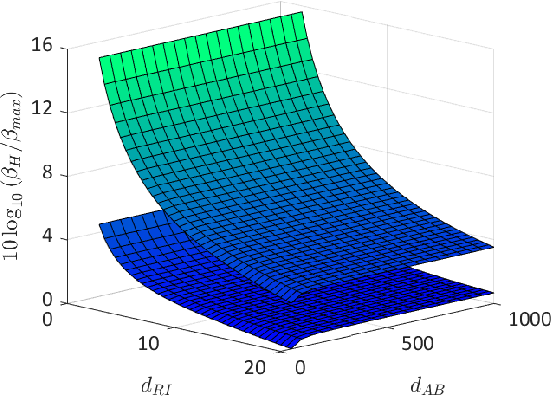
Abstract:Among the recent advances and innovations in wireless technologies, reconfigurable intelligent surfaces (RISs) have received much attention and are envisioned to be one of the enabling technologies for beyond 5G (B5G) networks. On the other hand, active (or classical) cooperative relays have played a key role in providing reliable and power-efficient communications in previous wireless generations. In this article, we focus on hybrid network architectures that amalgamate both active relays and RISs. The operation concept and protocols of each technology are first discussed. Subsequently, we present multiple use cases of cooperative hybrid networks where both active relays and RISs can coexist harmoniously for enhanced rate performance. Furthermore, a case study is provided which demonstrates the achievable rate performance of a communication network assisted by either an active relay, an RIS, or both, and with different relaying protocols. Finally, we provide the reader with the challenges and key research directions in this area.
Coverage Probability of STAR-RIS assisted Massive MIMO systems with Correlation and Phase Errors
May 31, 2022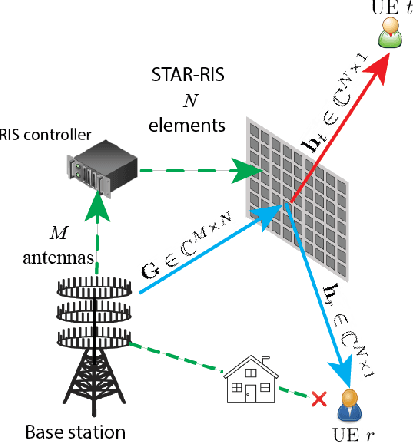
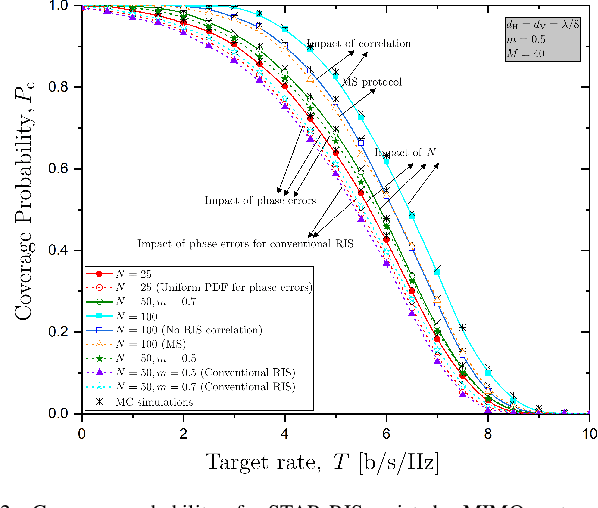
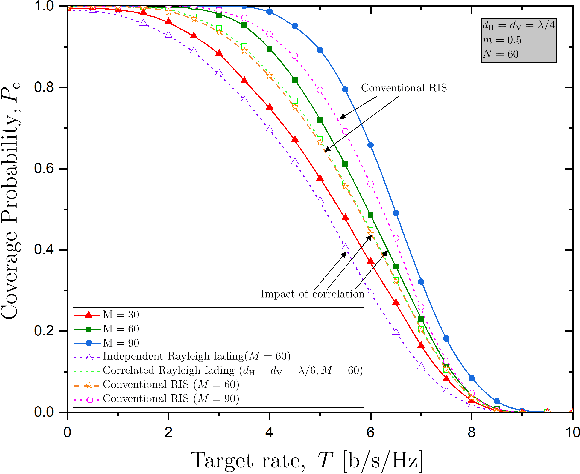
Abstract:In this paper, we investigate a simultaneous transmitting and reflecting reconfigurable intelligent surface (STAR-RIS) assisting a massive multiple-input multiple-output (mMIMO) system. In particular, we derive a closed-form expression for the coverage probability of a STAR-RIS assisted mMIMO system while accounting for correlated fading and phase-shift errors. Notably, the phase configuration takes place at every several coherence intervals by optimizing the coverage probability since the latter depends on statistical channel state information (CSI) in terms of large-scale statistics. As a result, we achieve a reduced complexity and overhead for the optimization of passive beamforming, which are increased in the case of STAR-RIS networks with instantaneous CSI. Numerical results corroborate our analysis, shed light on interesting properties such as the impact of the number of RIS elements and the effect of phase errors, along with affirming the superiority of STAR-RIS against reflective-only RIS.
Toward Autonomous Reconfigurable Intelligent Surfaces Through Wireless Energy Harvesting
Aug 18, 2021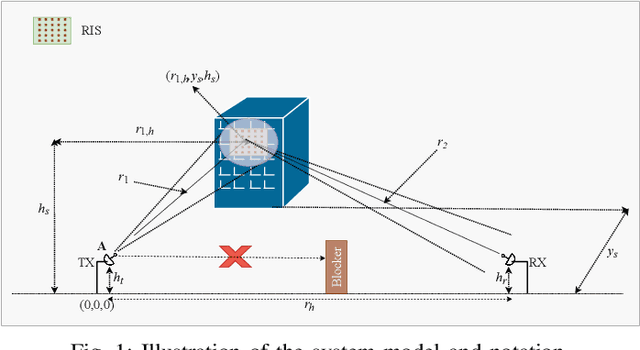
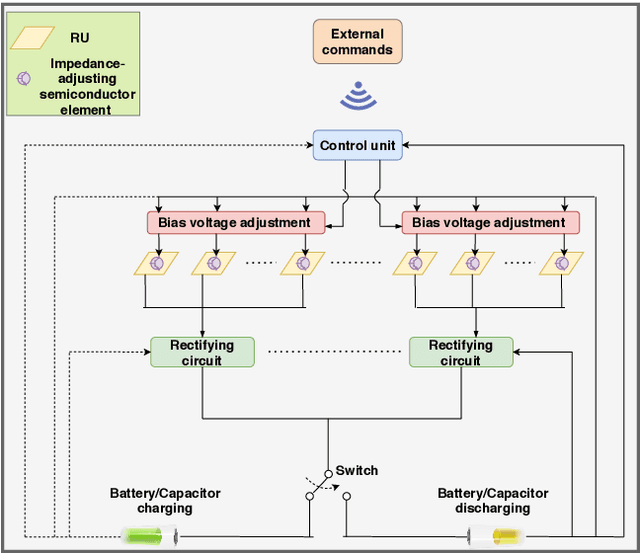
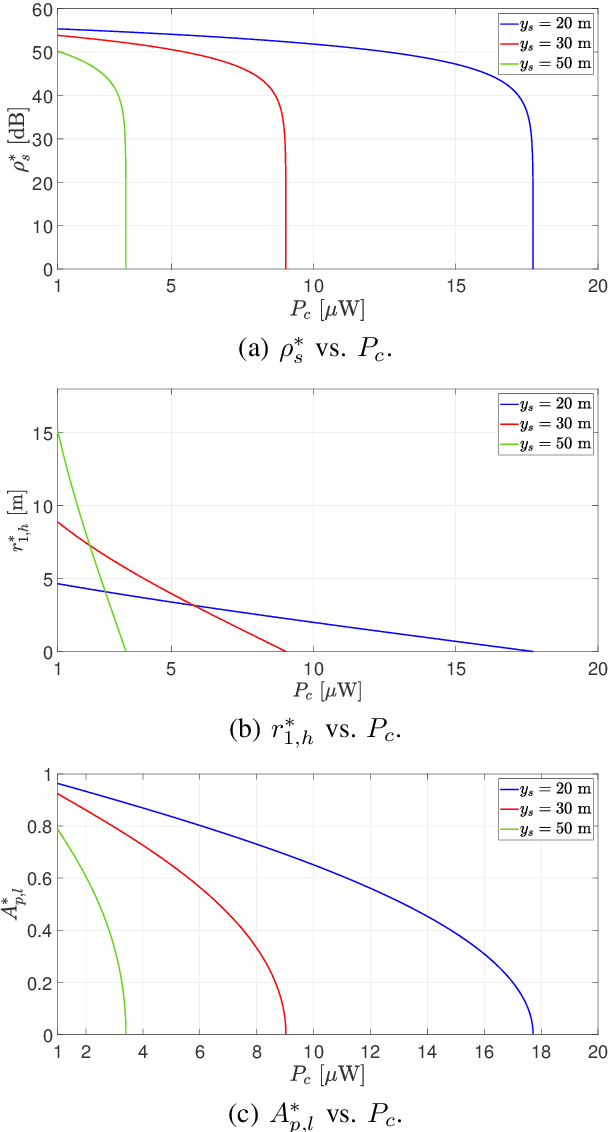
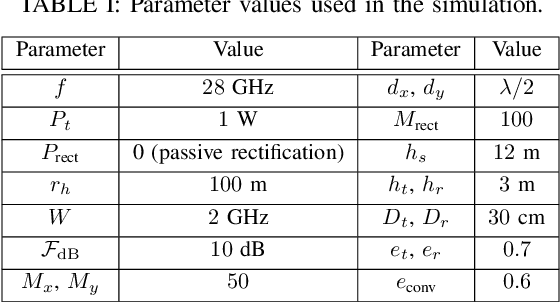
Abstract:In this work, we examine the potential of autonomous operation of a reconfigurable intelligent surface (RIS) using wireless energy harvesting from information signals. To this end, we first identify the main RIS power-consuming components and introduce a suitable power-consumption model. Subsequently, we introduce a novel RIS power-splitting architecture that enables simultaneous energy harvesting and beamsteering. Specifically, a subset of the RIS unit cells (UCs) is used for beamsteering while the remaining ones absorb energy. For the subset allocation, we propose policies obtained as solutions to two optimization problems. The first problem aims at maximizing the signal-to-noise ratio (SNR) at the receiver without violating the RIS's energy harvesting demands. Additionally, the objective of the second problem is to maximize the RIS harvested power, while ensuring an acceptable SNR at the receiver. We prove that under particular propagation conditions, some of the proposed policies deliver the optimal solution of the two problems. Furthermore, we report numerical results that reveal the efficiency of the policies with respect to the optimal and very high-complexity brute-force design approach. Finally, through a case study of user tracking, we showcase that the RIS power-consumption demands can be secured by harvesting energy from information signals.
 Add to Chrome
Add to Chrome Add to Firefox
Add to Firefox Add to Edge
Add to Edge